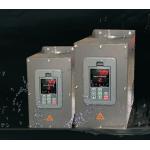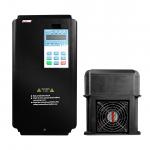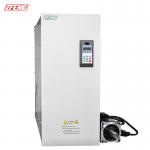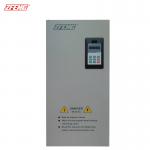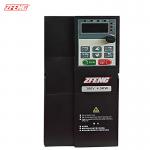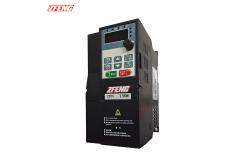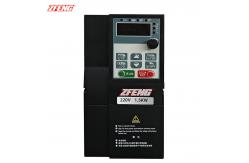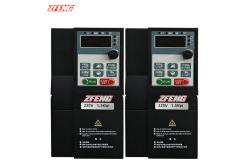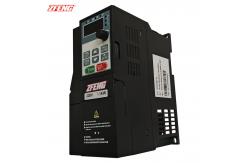ZFeng 310 Series 1.5Kw General Vector Variable Frequency Drive
A General Vector Variable Frequency Drive is a power electronic device designed to control the speed and torque
of AC motors by varying the frequency of the power supply to the
motor. It utilizes vector control technology to precisely adjust
the motor's output torque, enabling efficient and accurate motor
control.
Technical Principles
Frequency Conversion: The inverter operates on the principle of
converting the fixed frequency AC power supply to a variable
frequency and voltage AC power supply. This is achieved through a
process involving rectification, filtering, and inversion.
- Rectification: Converts AC power to DC power using diodes or
thyristors.
- Filtering: Smoothens the DC power to reduce voltage fluctuations.
- Inversion: Converts the DC power back to AC power with adjustable
frequency and voltage using switching devices such as IGBTs
(Insulated Gate Bipolar Transistors).
Vector Control Technology: This advanced control technique
decomposes the motor's current into two components: the excitation
current and the torque current. By independently controlling these
two components, the inverter achieves precise control over the
motor's torque and speed, similar to the control of a DC motor.
Control Modes
Vector Control drives offer various control modes to suit different
application requirements and motor characteristics:
- V/F Control (Voltage/Frequency Control): A basic control method where the output voltage and frequency of
the inverter are maintained in a constant ratio. Suitable for
applications with low speed precision requirements.
- Sensorless Vector Control(SVC): Estimates the rotor position and speed without using sensors (e.g.,
encoders). It analyzes the back EMF (Electromotive Force) in the
motor windings to indirectly calculate the rotor position and
speed, achieving similar performance to sensor-based vector
control.
Characteristics and Advantages
- High Precision Vector Control: Achieves precise control over motor
torque and speed with an accuracy of up to 0.01%, meeting the
demands of high-precision applications such as CNC machines and
printing equipment.
- Excellent Low-Frequency Performance: Maintains high torque output
even at low frequencies (e.g., 150%-200% of rated torque at 0.5Hz),
ensuring smooth motor operation and preventing low-frequency jitter
or crawling.
- Wide Motor Compatibility: Compatible with various types and power
ratings of AC motors, including induction motors and permanent
magnet synchronous motors (PMSMs). Automatic motor parameter
identification or manual input of motor nameplate data simplifies
the matching process.
- Energy Efficiency: Reduces unnecessary energy consumption by
precisely controlling motor speed and torque, especially during
partial load or low-speed operations.
- High Reliability and Stability: Designed with high-quality
electronic components and advanced manufacturing processes,
ensuring stable operation in harsh industrial environments (e.g.,
high temperature, humidity, dust).
- User-Friendly Interface: Equipped with a clear and intuitive
operation panel featuring an LCD display and easy-to-use menu
interface, facilitating parameter setting, operation monitoring,
and fault diagnosis.

